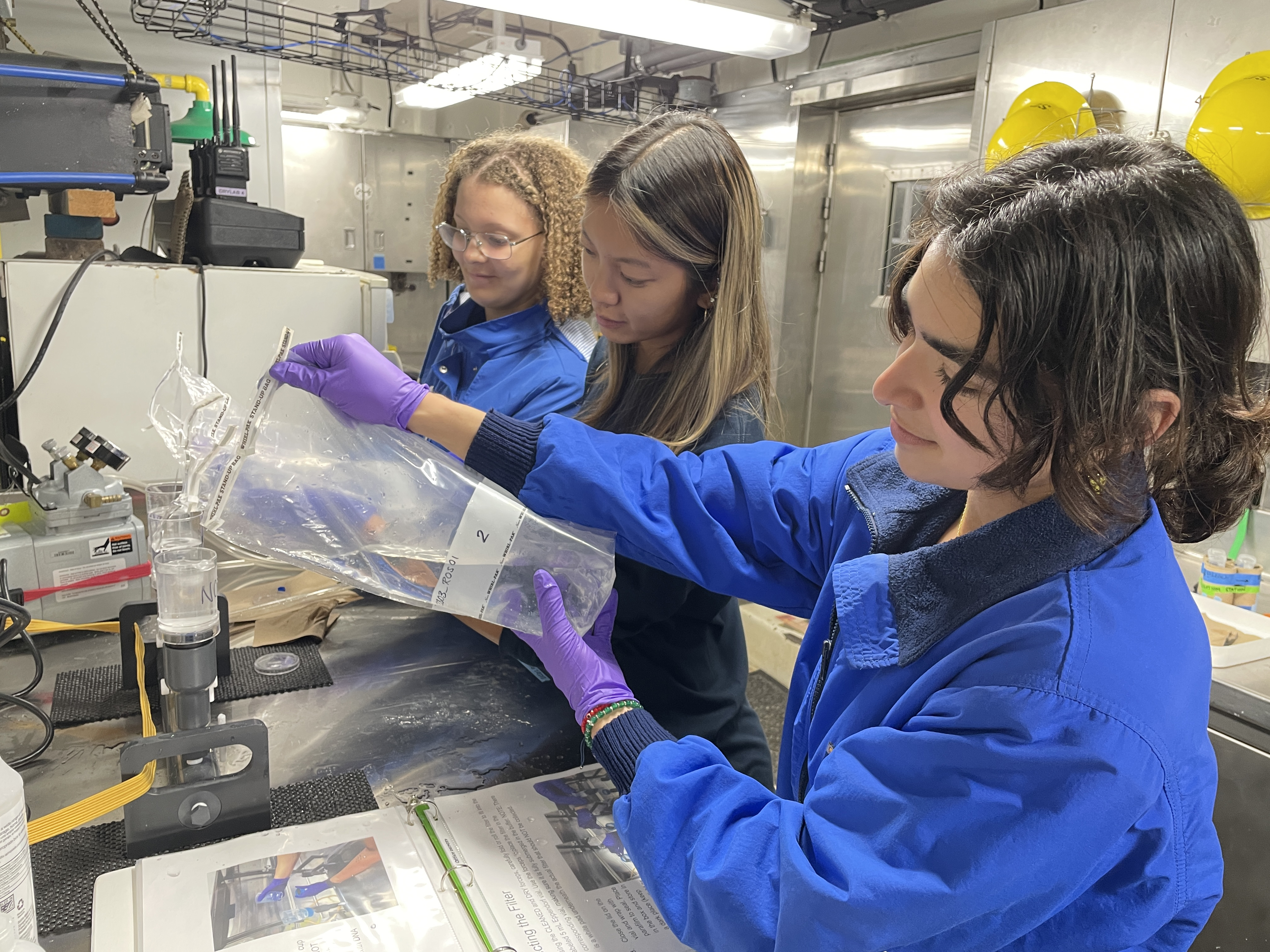Topic
Cold Seeps

Environmental DNA (eDNA)
As organisms interact with their environment, they shed DNA into their surroundings. Environmental DNA (eDNA) are tiny bits of genetic material that organisms leave behind in the water, soil, and even air. Sources of eDNA include secreted matter such as urine, feces and mucus, as well as sloughed off materials like skin, scales, and hair. In aquatic environments, these DNA fragments can be collected in water samples, however, eDNA only lasts in the water for about 7 to 21 days. Exposure to ultraviolet radiation (sun), acidity, heat, and microbial activity can all break down eDNA. Excreted or sloughed eDNA offers a unique, non-invasive opportunity find out what organisms have been in an area using only environmental samples (specimens do not need to be sampled directly). Think of a fingerprint left behind after a person has exited an area- eDNA is a trace, genetic signature left behind by an organism.
Download our print-friendly fact sheet to learn more about eDNA, how it is collected, and how it is used in ocean exploration.